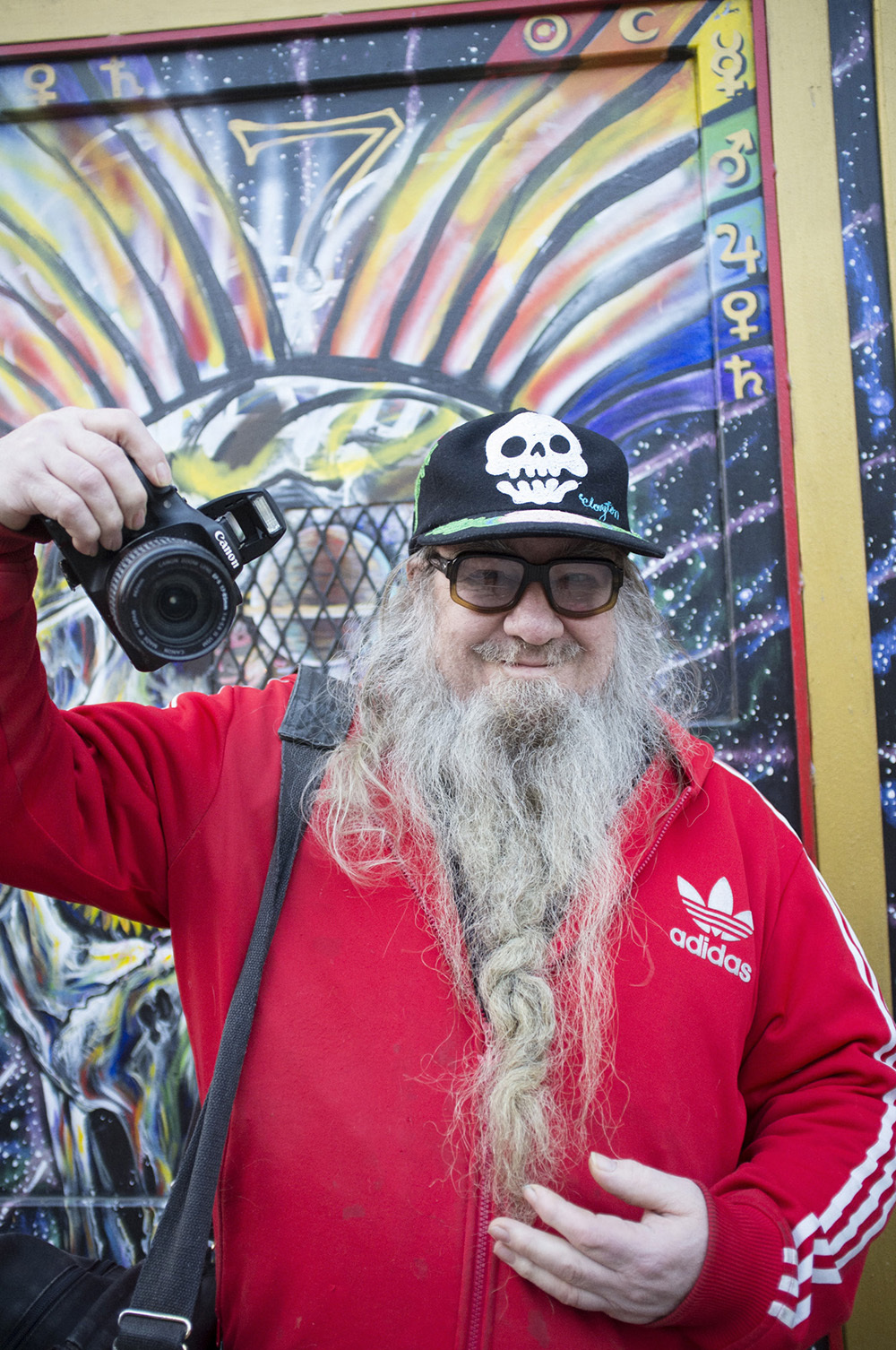
Photo by Jessica Lehrman
The photographer Clayton Patterson is a living testament to the New York of yesteryear. Day after day, he captured that special time during the 80s and early 90s when the Lower East Side was both dangerous and the home of the city’s creative class. His images document the more mundane, daily grind of living in the neighborhood, as well as the larger cultural clashes that occurred, like the Thompkins Square Riots in 1988.
Patterson has lived in the neighborhood for more than 30 years. During that time he has amassed an archive of over half a million photos as well as hundreds of hours of video footage that preserve the area’s history, the characters and establishments that made it special. Be it street gangs, drag queens, or GG Allin, if it happened on the LES there’s a good chance Patterson was there, doing whatever he had to do to get the shot. He has been arrested 13 times and battled countless lawsuits over the past 20 years, all related to his uncompromising documentation of lower Manhattan.
Videos by VICE
I was lucky enough to meet Patterson recently while shooting an episode for my documentary series, “No Your City,” which profiles NYC street characters. When we met he was complaining about Taylor Swift being named the city’s cultural ambassador and we hit it off instantly. He was even kind enough to let me feature a selection of his photos here on VICE today. So without further ado, I introduce you to the man I consider to be NYC’s ambassador, Clayton Patterson.
For more on Clayton Patterson see the documentary Captured.
All captions by Clayton Patterson.
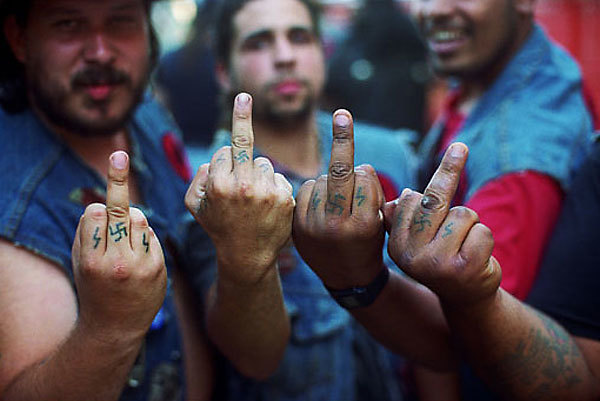
Satan’s Sinners. Tattoos were given after being initiated into the street gang.
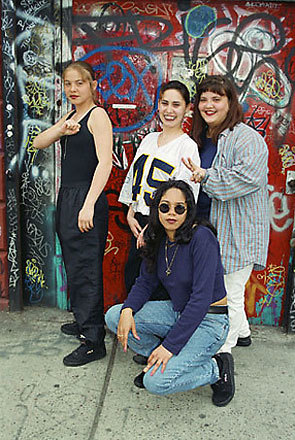
I have been taking photographs of LES locals outside of my 161 Essex Street apartment since 1986. These photos were put on display for every passerby to see.
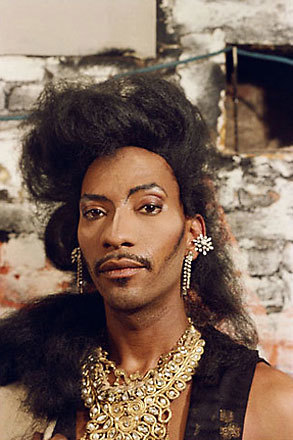
Gerard Little, aka Mr. Fashion, had a drag show at the Pyramid Club every Sunday night.
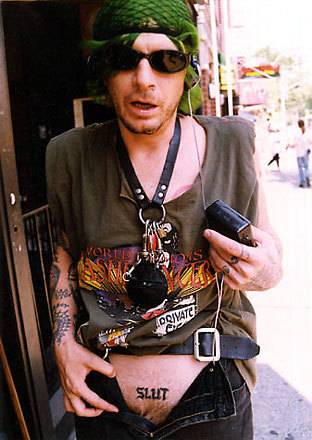
A friend of GG Allin.
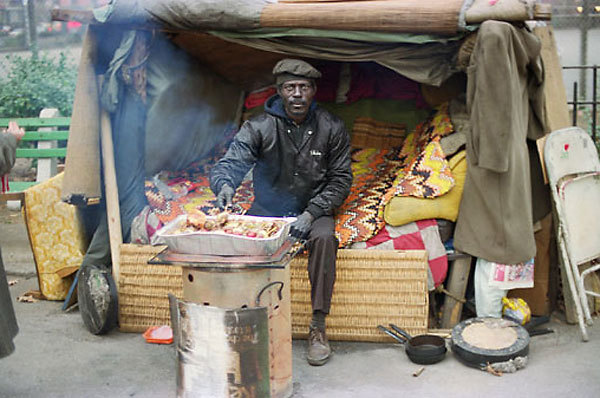
There were several hundred homeless people camping out in Tompkins Square park in the late 80s. It was nicknamed “Tent City.”
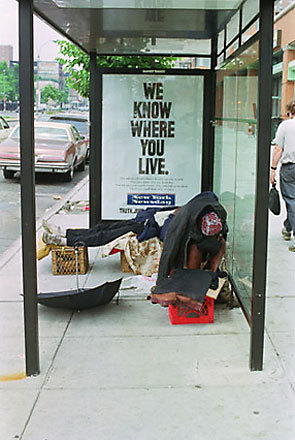
The homeless would take shelter wherever they could.
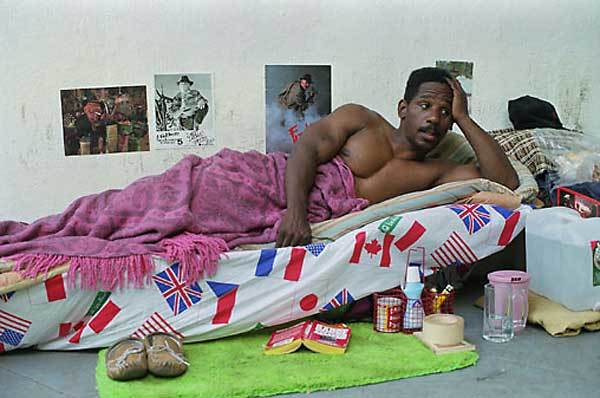
The bandshell in Thompkins Square Park was built in 1966 to give free concerts, and as a space to allow all the different ethnic groups in the community to listen to free music and have other meaningful social events. In 1988 Tompkins Square Park was the only park in NYC without a curfew. The bandshell was established as a free zone for the homeless to camp. Some of them made their spaces as home-like as possible.

Another resident of Tent City. Real people living in real situations. Gentrification was starting to amp up. Koch was converting many SRO’s (single room occupancy) hotels, ending the living spaces of many residents.
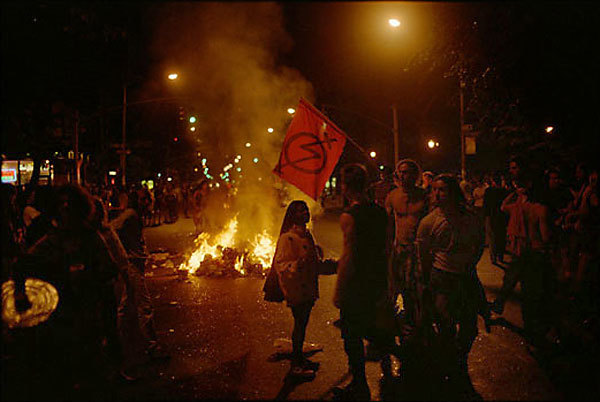
In 1992 the anti-gentrification protestors took over the streets. They would light large fires which would force the street to be closed to all traffic.
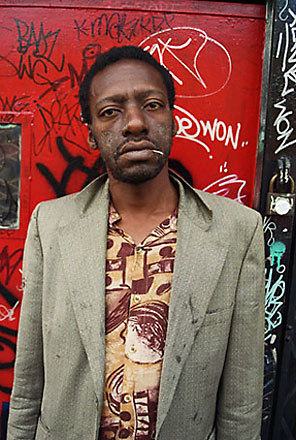
Front door series.
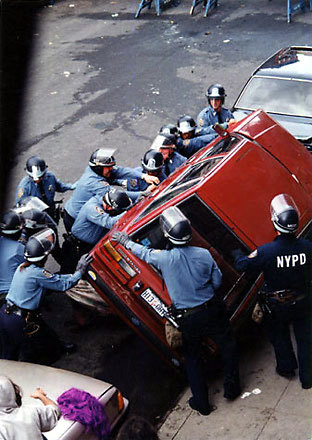
In 1996, Giuliani order the eviction of four of the five squats on 13th street on the north side of the street between Ave A and B. Once the cops broke through the protestors’ line of defense, one of them ran and hid under a car. The cops swarmed and overturned the vehicle to get him out.
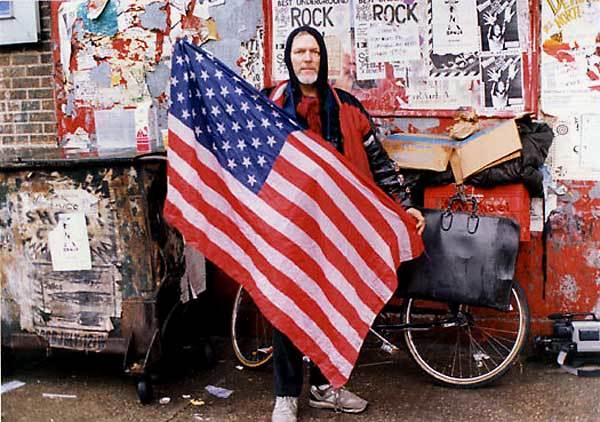
Robert Lee Marion, aka Loan Shark Bob, got his name for the way he loaned out money. He was one of the LES homeless who most often lived on the streets outside of TSP, or in front of the businesses on Avenue A.

Clark Render

Michael Wilson came to NYC from San Francisco with the ambition to become a sideshow Illustrated Man. He became the Coney Island Illustrated Man. Eventually his whole body was tattooed.

Two of the local homeless who made money as peddlers selling goods on the street.
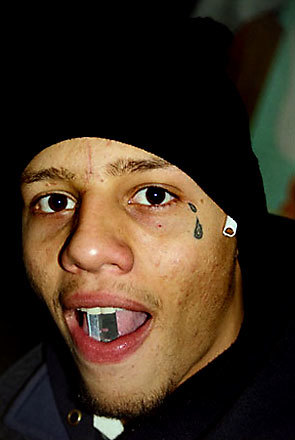
Triby and his family were a part of PRM (Puerto Rican Mafia) and NETA (Never Ever Tolerate Abuse). NETA was a group formed in the Puerto Rican prisons to defend prisoners’ rights. This photo displays how to hide a razor blade in one’s mouth.
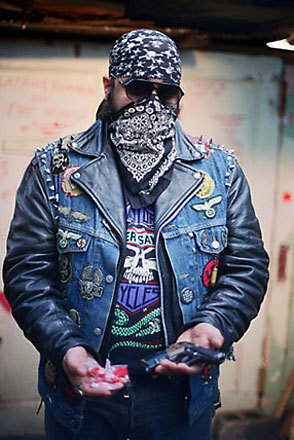
Cochise was the president of the Satan’s Sinners Nomads, the last of LES street gangs to wear colors. Here Cochise is displaying a handgun and a batch of crack-filled vials which he took off a local dealer.
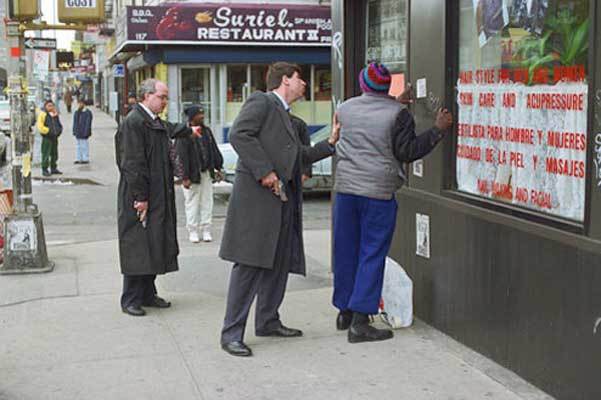
What looked like two federal agents stopped a homeless person as he was crossing the street. He had nothing on him and was allowed to leave.
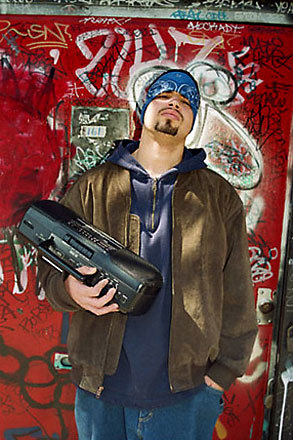
Front door series.
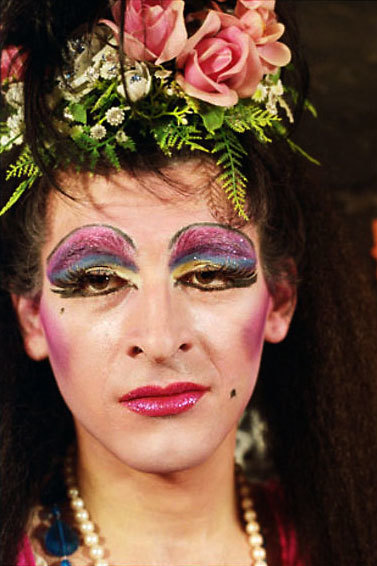
Bernard. Another of the Pyramid drag queens.
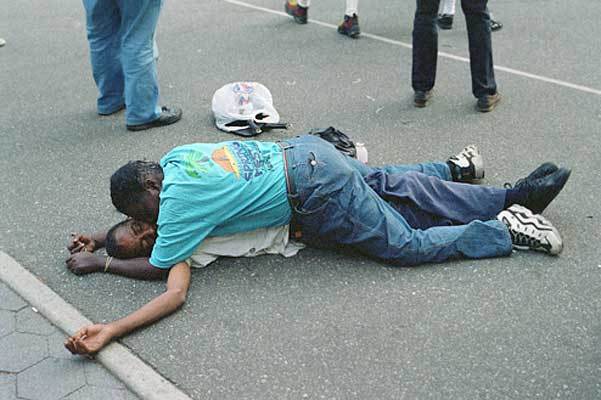
Thompkins Square Park concert. Two drunks got into a fight and ended up rolling around on the ground together.
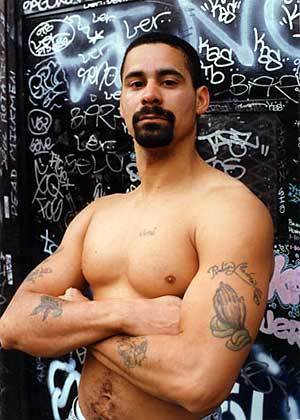
Front door series.

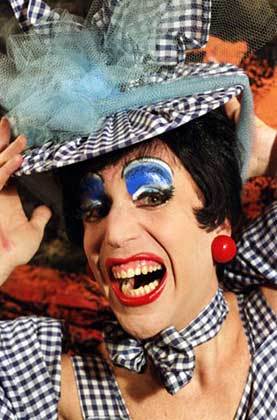
Sun PK, aka Peter Kwaloff, is the artist who invited me into the sanctuary of the Pyramid dressing room. I often went with him on Sunday night and documented him getting ready for his performance. Sun created a number of original characters. This one is Picnic Smith.
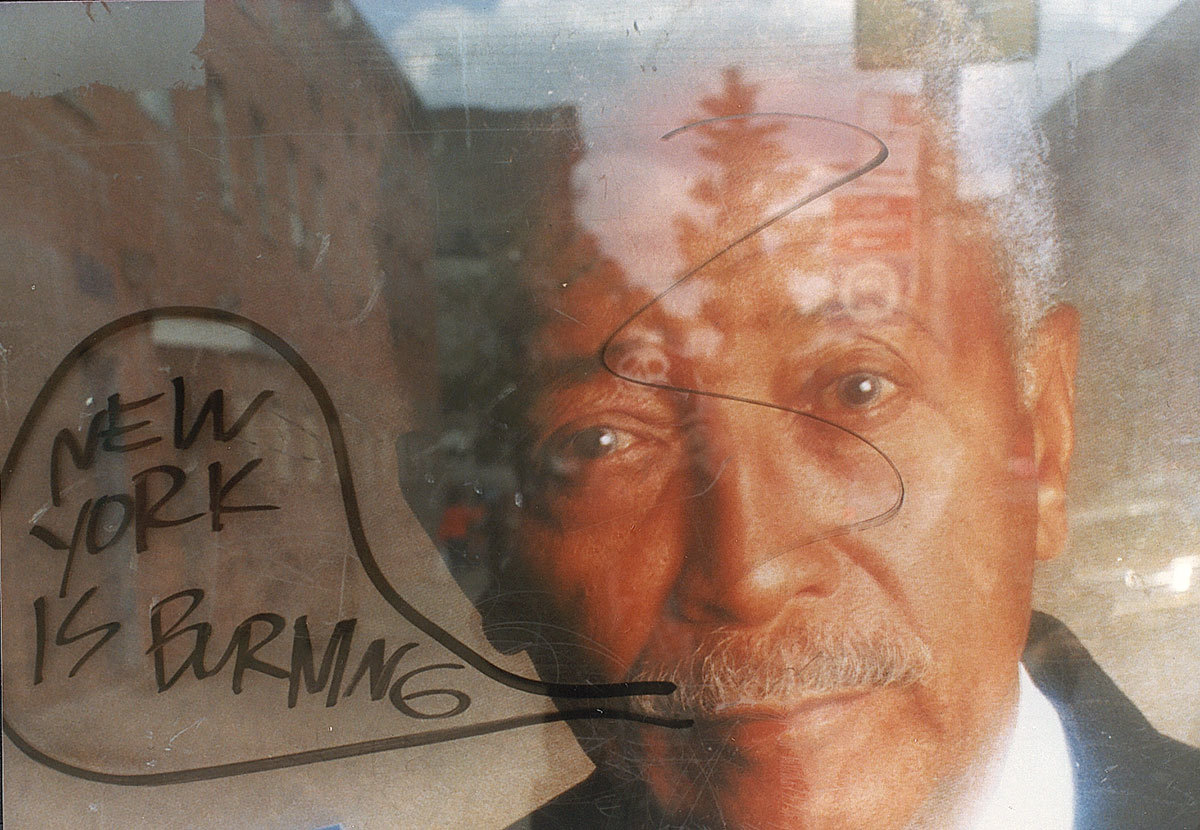
Bus stop ad. 1991. David Dinkins was mayor. Someone made a graffiti comment suggesting that the city was burning under his leadership.
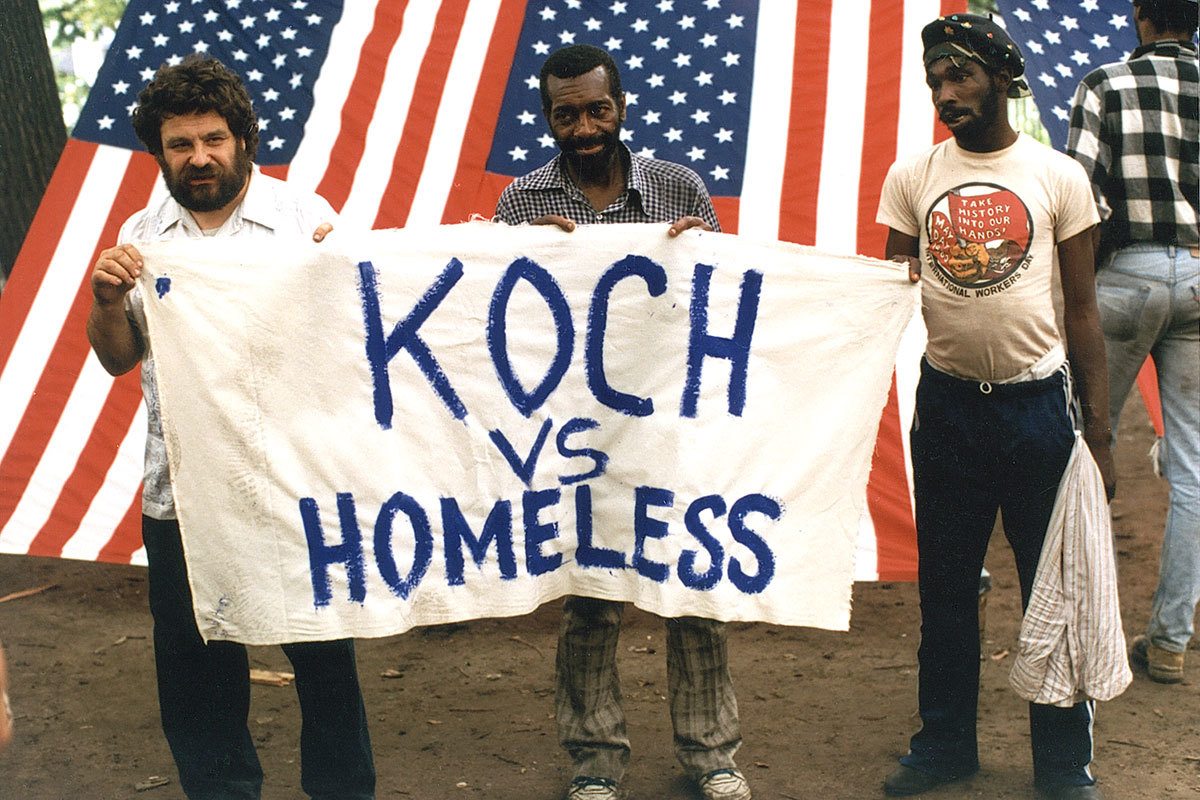
Koch Vs. Homeless. 1989.

A man tatttoed his body with miniature traditional flash images and an assortment of tattoo artists’ names.

The scene on Bleeker Street in 1989 after Mordechai Levy, founder of the JDO (Jewish Defense Organization) shot a man sitting in his van.

